A foundation for Success
Gain valuable experience and enhance your skills through a 1-year Clinical Anatomy graduate certificate program. You’ll study on our beautiful campus on the coast of Maine, working alongside students in the University of New England’s Doctor of Osteopathic Medicine program, under the mentorship of medical school faculty.
This certificate prepares you for admission into professional medical or health professions degree programs by ensuring you have knowledge in anatomy and physiology before applying. It also allows you to improve your performance in coursework and understanding of biomedical topics.
Earn your Clinical Anatomy certificate to lay a foundation for success in the field of medicine.
Complete our form to download an info sheet on UNE’s Clinical Anatomy program, and to sign up to receive more details on the curriculum and admissions process.
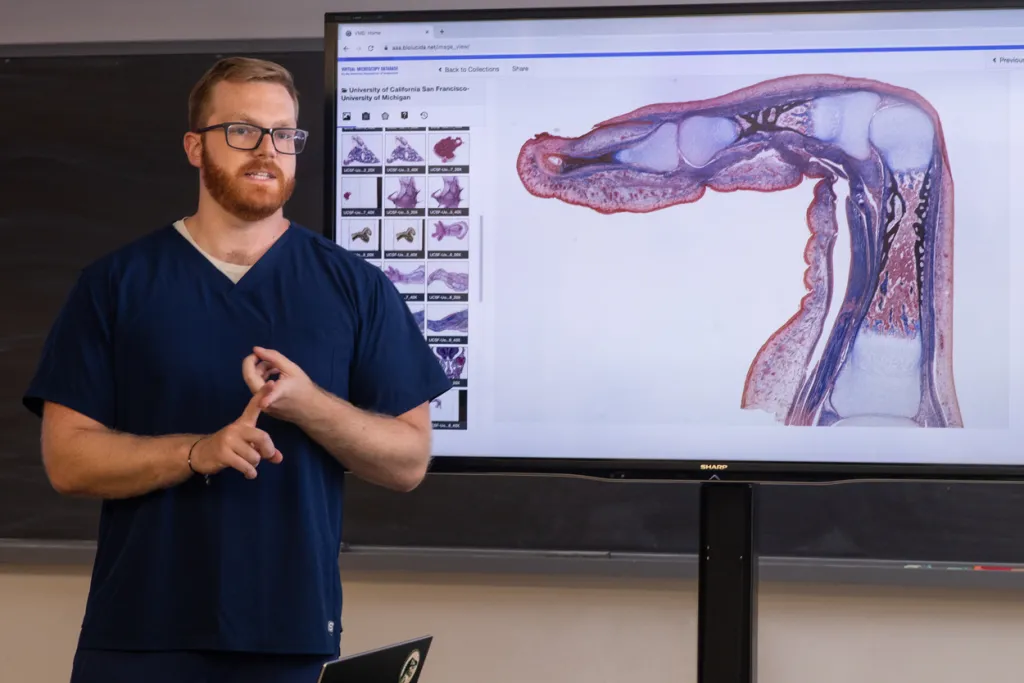
The 1-Year Certificate Experience
The Clinical Anatomy certificate program incorporates some of the existing curriculum within the College of Osteopathic Medicine’s Doctor of Osteopathic Medicine degree program. You will be studying under medical school faculty, side by side with students from the Clinical Anatomy master’s program and the Doctor of Osteopathic Medicine degree program.
The program is centered around UNE’s donor anatomy lab — the only lab of its kind in southern Maine.
The one-year anatomy certificate curriculum includes courses in the following topics:
- Medical donor Anatomy, where students develop an understanding of human structure and function at the donor anatomical level.
- Medical Physiology, which introduces medical science knowledge, particularly physiology and pathophysiology.
- Medical Embryology, which includes the study of the early development of human cells, tissues, and organs.
- Medical Histology, which covers the study of microscopic anatomy and function of cells and tissues that make up the organ systems.
- Medical Imaging, which empowers students to study human anatomy via imaging modalities such as radiography, ultrasonography, computed tomography (CT), magnetic resonance imaging (MRI), and fluoroscopy.
Curriculum
| Program Required Courses* | Credits |
|---|---|
| CAN 501 – Medical Embryology 1 | 0.5 |
| CAN 505 – Medical Histology 1 | 1 |
| CAN 510 – Medical Imaging 1 | 1 |
| CAN 515 – Medical Gross Anatomy 1 | 6 |
| CAN 520 – Medical Physiology 1 | 3 |
| CAN 550 – Medical Embryology 2 | 0.5 |
| CAN 555 – Medical Histology 2 | 1 |
| CAN 560 – Medical Imaging 2 | 1 |
| CAN 565 – Medical Gross Anatomy 2 | 6 |
| CAN 570 – Medical Physiology 2 | 3 |
| Minimum Total Required Credits | 23 |
|---|
*The purpose of the catalog is to provide a comprehensive list of required courses. The College of Osteopathic Medicine can provide a degree map listing which courses should be taken in each stage of this timeline.
Why UNE for your Clinical Anatomy Certificate
At UNE, we pride ourselves on creating a unique learning environment for all of our students. Draw on the expertise of faculty members from our colleges of medicine, health professions, dental medicine, and our College of Arts and Sciences, and reap the rewards of training alongside future providers in other health professions. You benefit by attending a comprehensive health sciences university that is nationally recognized for excellence in preparing students for collaborative, interprofessional, team-based care.
Guided by skilled faculty in the College of Osteopathic Medicine, you will work alongside our doctor of osteopathic medical students and master’s in clinical anatomy students in our state-of-the-art donor anatomy lab. With just a handful of students enrolled in the Clinical Anatomy certificate program, our faculty can provide you with the in-depth, individualized advising and mentorship that you would not find at much larger schools.
Hands-On Learning Outcomes
The 1-year graduate certificate in Clinical Anatomy will provide you with immersive hands-on learning opportunities that prepare you to realize your education and career goals. Upon completion of the certificate program, graduates will be able to:
- Demonstrate an advanced understanding of human anatomy, embryology, histology, and physiology with special emphasis on knowledge relevant to health professionals.
- Describe advanced anatomical knowledge as it relates to clinical imaging studies including fluoroscopy, radiology, CT scans, MRI, venous and arterial studies, cardiac studies, etc.
- Demonstrate interpersonal and interprofessional skills (such as student-staff and peer-peer communication), peer-active teamwork, and collaborative leadership, thereby fostering, identifying, and practicing the professional behavior(s) expected within the healthcare setting.
Facilities
Donor Anatomy Lab
The Clinical Anatomy program is centered around UNE’s Donor Anatomy Lab — the only lab of its kind in Southern Maine. Here, you will learn to develop an understanding of human structure and function at the gross anatomical level. This state-of-the-art facility has five pods with cutting edge equipment.
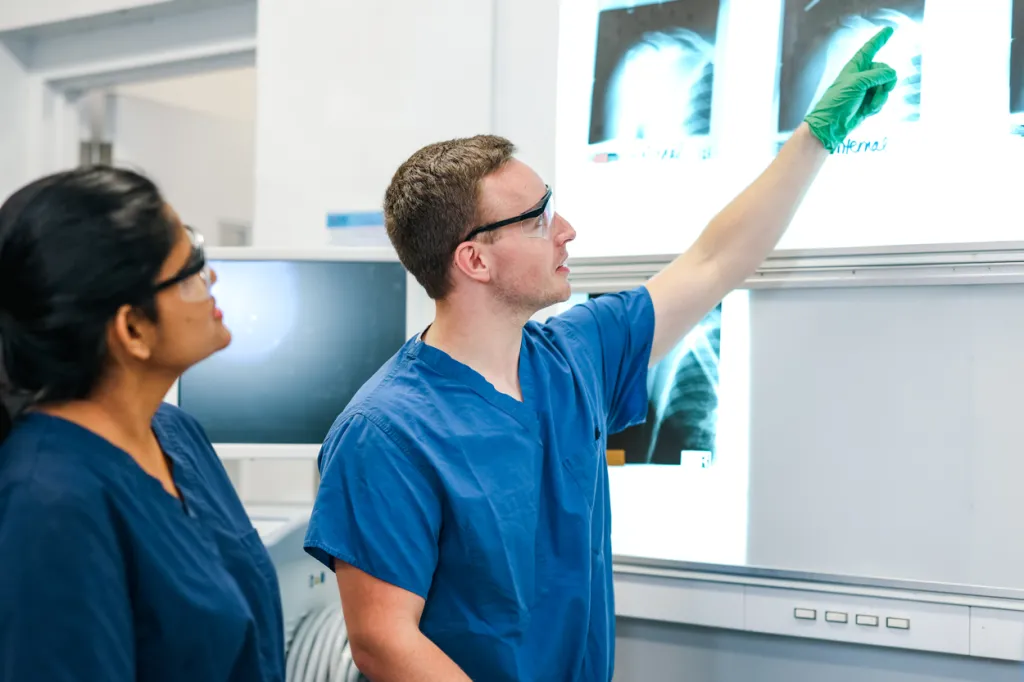
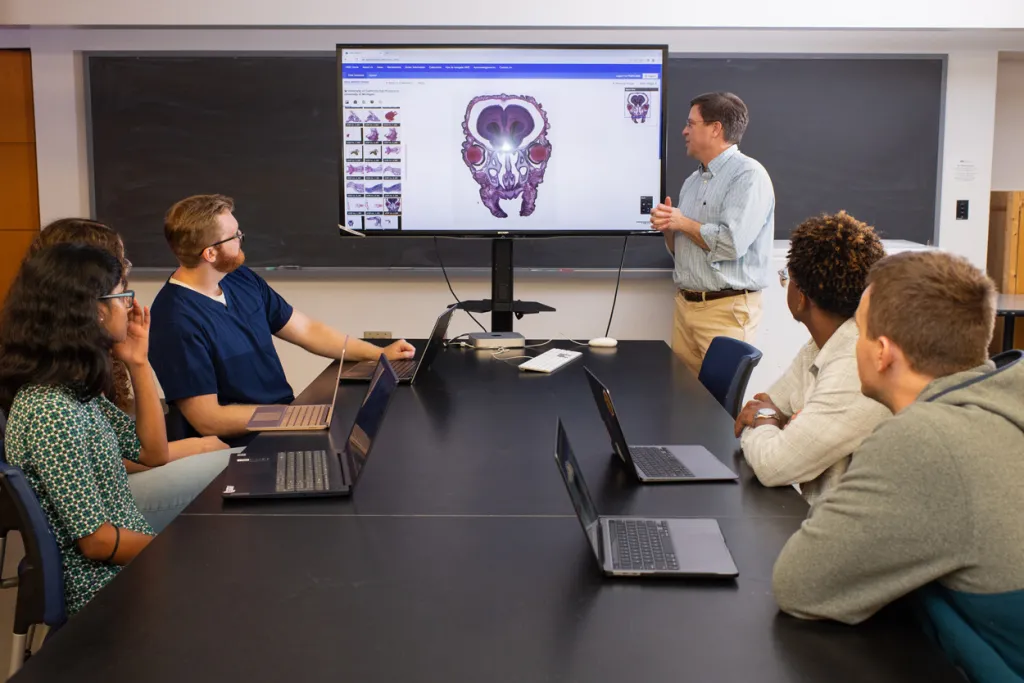
Interprofessional Learning
When students from two or more disciplines learn with, from, and about each other to better understand different professional roles and expertise, great things can happen. Students, faculty, and community partners all learn together to advance effective health practices and improve the quality of life for all people. As a student in the Clinical Anatomy program, you will be studying alongside students from other programs including the Doctor of Osteopathic Medicine, and the M.S. in Clinical Anatomy, and beyond.
UNE is proud to be the only institution in New England that is part of the National Center for Interprofessional Education and Practice’s prestigious Innovation Network.
Careers
You will have successfully completed one year of anatomy education within our College of Osteopathic Medicine’s D.O. program, working with current medical students. If you end up continuing on to medical school, you’ll have a strong academic advantage with anatomy coursework.
In addition, the certificate supports a variety of education and career opportunities:
- Educator (in a collegiate setting)
- Medical illustrator
- Anatomy lab manager
- Lab coordinator
- Lab diener
- Autopsy technician
- Imaging specialist
Living and Learning in Maine
As a student in our Clinical Anatomy certificate program, you will primarily study on our Portland Campus, which is home to the UNE College of Osteopathic Medicine, with occasional learning experiences on our scenic coastal Biddeford Campus. Our Portland Campus for the Health Sciences is located in a quiet neighborhood that is a 10-minute drive from the downtown waterfront. The campus is close to major clinical sites as well as countless attractions and amenities. Named “America’s Most Livable City” by Forbes and “Foodiest Small Town in America” by Bon Appetit, Portland is the city on every list.
In Biddeford, the waters of the Saco River flow into the Atlantic Ocean. Recently named the youngest city in Maine, Biddeford boasts an up-and-coming, hip downtown offering delicious eateries, exciting social and cultural events, and more.
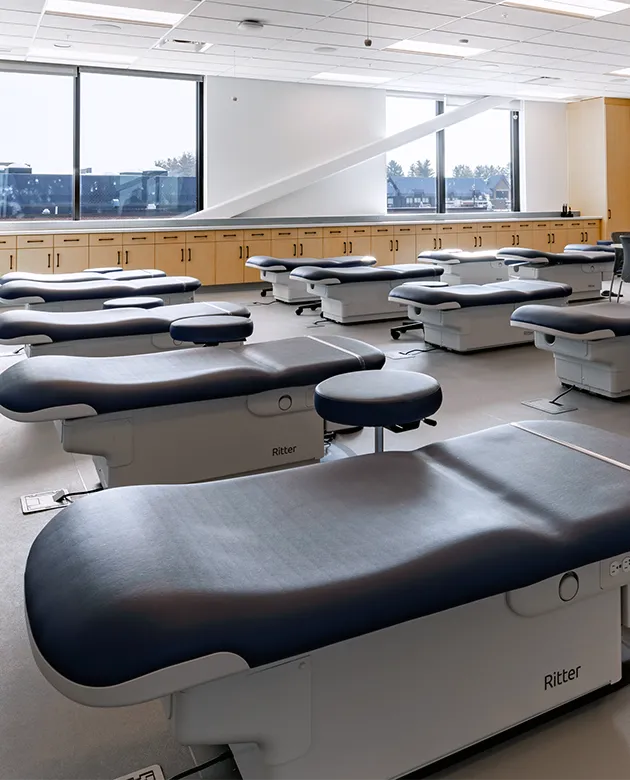
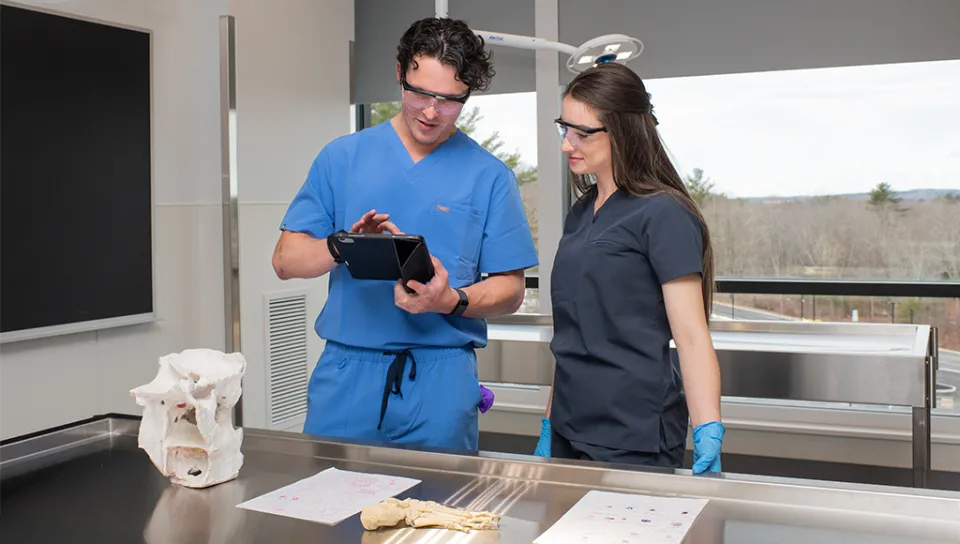
Financial Aid at UNE
Finance your education through loans, grants, and scholarships. We are committed to making our physician assistant degree program as affordable as possible.
FAQ
What is a certificate in clinical anatomy?
A 1-year graduate certificate in clinical anatomy will prepare students for success in applying, entering, and completing medical and other health professions school through the delivery of a strong curriculum focused on anatomy and physiology. Anatomy certificate programs also lay the foundation for future success in a wide variety of medical fields.
What can you do with an anatomy certificate?
Attainment of a certificate in clinical anatomy, such as UNE’s Clinical Anatomy graduate certificate program, can be linked to a variety of career opportunities. Earning your clinical anatomy certificate through a 1-year certificate program will prepare you to be more competitive for admission to medical school and further success in such a curriculum.
Graduates who complete a clinical anatomy certificate program will be well positioned for a variety of careers in the healthcare industry which might include working as a medical imaging specialist, medical illustrator, anatomy lab manager/coordinator/diener, or an autopsy technician within a medical examiner’s (coroner’s) office.
Why should I get a clinical anatomy certificate?
By enrolling in a clinical anatomy certificate program, you will gain valuable experience and enhance your anatomy and physiology skills. UNE’s Clinical Anatomy graduate certificate program prepares you for admission into professional medical or health professions degree programs by ensuring you have advanced knowledge in anatomy and physiology before applying.
Students completing an anatomy certificate program will be knowledgeable in detailed human anatomy, embryology, histology, imaging, and physiology.
Where is the best place to get a clinical anatomy certificate?
When looking to apply for a clinical anatomy certificate program, you should look for a program that offers exceptional hands-on learning. UNE has the only donor lab in Southern Maine and working with cadavers is a vital function in anatomy. As part of the UNE College of Osteopathic Medicine (UNE COM), students will have the opportunity to work alongside M.S. and D.O. students.
You should also find a program that requires interprofessional learning. The future in medicine will be based on teamwork, and learning to work with other health professionals from other fields will be paramount to the success of patient outcomes.
How long does it take to obtain a certificate in clinical anatomy?
At the University of New England, the attainment of a graduate certificate in anatomy takes one year.
